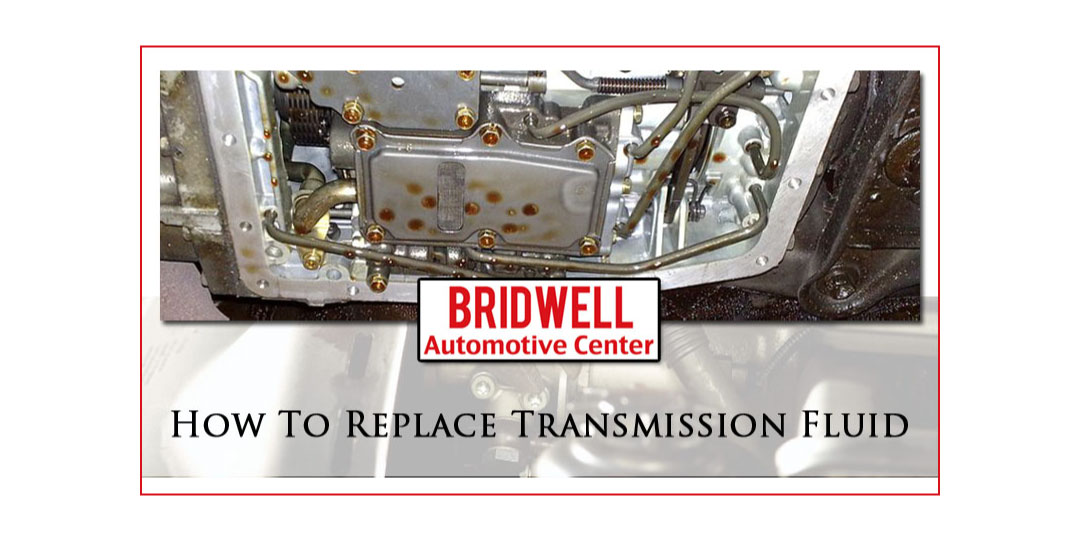If you’re replacing transmission fluid in your vehicle you’re likely searching for a guide on how to replace transmission fluid. For motorists that have the time, tools, and desire to do the work themselves, this guide will help. It is a general guide for most automobiles but will not cover every mark or model.
Why Change Transmission Fluid
All vehicles use fluids to either clean or lubricate vital functions. Over time the fluids unavoidably collect metal shavings and dirt. If you’re lucky this debris settles at the bottom of the pan instead of circulating through the entire system. For this reason, many auto repair shops choose to flush transmissions under pressure to remove as much of the metal shavings and dirt from your vehicle’s transmission.
Regular fluid changes extends the life of your vehicle. Transmissions need to have the fluid changed every 30 months or 30,000 miles. The exact interval or mileage will differ from vehicle to vehicle so ensure that you read your owner’s manual for information specific to your care, truck, suv, or van. If you check your transmission fluid and it has a burnt smell or dark appearance you should change it sooner.
Changing Transmission Fluid Yourself
While some motorists don’t mind changing their oil, those same people typically avoid changing their own transmission fluid. This is because changing transmission fluid can cause a huge mess as you will need to remove the pan. Even if your vehicle has a transmission pan drain plug, you’ll have to remove the pan to change the transmission fluid filter. As fluid changes go, transmission fluid is one of the messiest.
Signs You Need To Change Transmission Fluid
Unless you’re a master technician you likely don’t know the symptoms of worn out transmission fluid. If your automatic transmission has any of the following symptoms it may well be time to change your transmission fluid.
- Vehicle will not engage a gear in forward or reverse
- The transmission shift roughly from gear to gear
- Your transmission slips as you drive
- The transmission has unusual or louder noises
If you’ve experienced any of these symptoms you should consider changing your transmission fluid, or have your transmission fluid changed by an automotive service shop.
Transmission Fluid Change Steps
If you’ve got the space, tools, desire and want to spend the time to change your transmission fluid, you can do it yourself by following these steps.
Step 1 – Warm Up Your Vehicle
Your transmission fluid is designed to work at high temperatures and will change better if it is warmed up. To do this just let your vehicle idle for a few minutes. Once it’s warmed up shut it off, raise, and then secure your vehicle.
Step 2 – Protect Your Work Space
You likely are working in your garage or driveway and don’t want transmission fluid all over the place. Lay down a tarp, newspaper, or cardboard under the vehicle. Place a minimum of a 2 gallon catch pan to collect the transmission fluid as you drain it.
Step 3 – Unbolt Transmission Pan
Start by removing the bolts on one side of your transmission pan. Be very careful not to burn yourself on the hot fluid or the high temperature sections of the exhaust system. Next loosen the bolts which should start to lean the pan and start the fluid to drain. After you have removed all of the bolts carefully lower the pan and drain the rest of the transmission fluid into the pan. You may need to gently break the seal with a flathead screwdriver.
Step 4 – Clean & Inspect
This is a great chance to check your transmission for excessive wear by looking for signs of damage or metal shavings. Once you’ve inspected the pan for shavings clean it with solvent. You also will need to clean the gasket surfaces on the pan and housing of the transmission.
Step 5 – Remove Old Filter
Next you’ll need to remove the old transmission filter. It is likely filled with dirt, metal shavings, and debris from your transmission. Chances are it will still be holding some transmission fluid, so your catch pan should be handy so you can dispose of it properly. This is also a good chance to remove the old o-ring that goes around the perimeter of the pan and housing.
Step 6 – Install New Gasket
With the surfaces on the pan and the housing cleaned you should install your new transmission fluid gasket with oil soluble grease. Avoid using adhesive or gasket sealer for this area of your vehicle. An easy way to do this is carefully attach the gasket onto the pan so gravity holds it in place as you gently reattach the pan by loosely replacing the bolts.
It’s important to check your owner’s manual to see if you need thread sealer on some or all of the bolts for your transmission pan. Finger tighten the bolts to hold the pan securely in place.
Step 7 – Tighten Transmission Pan Bolts
Most vehicle manufacturers state the torque or pounds of pressure you should tighten your bolts to for most parts of your car, the transmission pan is no different. Not having enough pressure will cause it to leak, while too much could damage the bolts, housing, or pan. Consult your owner’s manual to find out what that bolt torque should be. This should be done in a spiral pattern one bolt after another. Double check all bolts after the pan is securely in place for correct torque.
Step 8 – Replace Transmission Fluid
Finally the exciting step of putting new transmission fluid into your vehicle. Start by lowering your vehicle back down and fill it to the recommended amount for your make and model.
Step 9 – Test Your Vehicle
You’ll want to run your vehicle in your driveway to check for leaks before taking it for a spin. Let it idle for a few minutes and then check for leaks. If there aren’t any you can bring the vehicle up to operating temperature, shift through all of your gears, place it back into park, and then check for leaks. It’s also a good idea to check the dipstick for your transmission fluid at this stage while the engine is just idling.
Transmission Fluid Change Service
If you live in Scottsdale and need to get your transmission fluid changed, Bridwell Automotive Center is here to help! Our Master ASE Technicians understand all of the systems in your vehicle including your transmission and what it takes for it to work correctly. We will happily and affordably replace transmission fluid in whichever vehicle you need. To schedule transmissions fluid change please call (480) 948-4781






